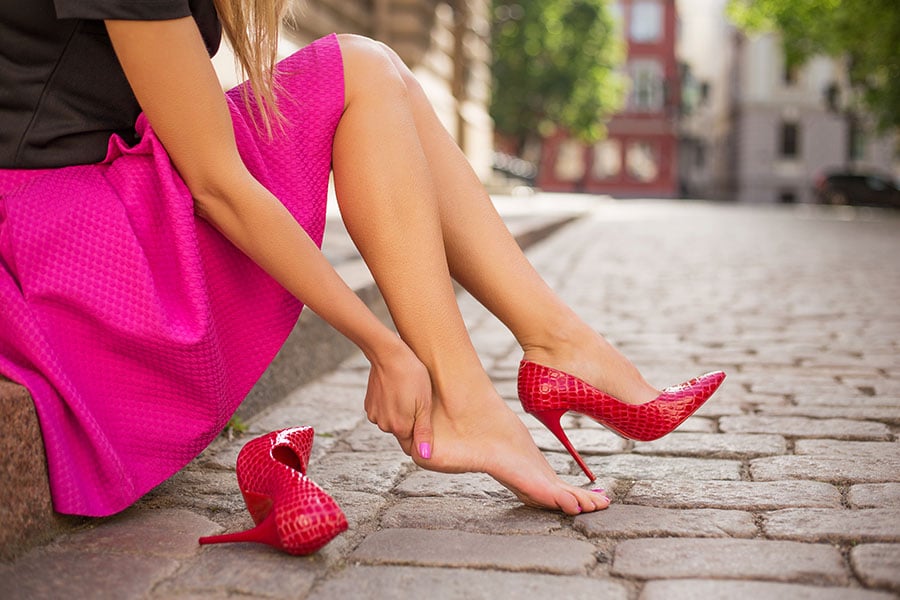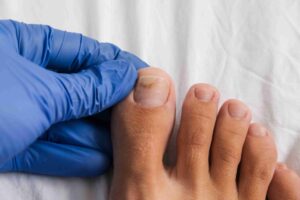Paola Ash
Heel Pain
You may be suffering from a sharp, stabbing pain in the heel or bottom of the foot and it is making you irritable. Heel pain is a common foot problem that we experience because of the activities and our routines that we execute daily.
It has been estimated to affect about 10% of runners also present in the general population at about the same ratio still. Moreover someone suffering from heel pain frequently complains of pain on the posterior aspect of the calcaneus (heel bone) at the insertion of the achilles.
Often times, athletes are the most at risk to develop painful heel conditions and it is the most frequent injury in ballet dancers. Active routines such as running and jumping can put constant strain on the heel, various muscles, ligaments all over the foot, ankle, and calf, which can then lead to significant tissue damage. Improper muscle flexibility, increased foot pronation as well as leg-length discrepancies are other predisposing factors for this condition.
Causes of Heel Pain
The common cause of heel pain is overuse. Other causes of heel pain includes:
- Plantar Fasciitis – occurs when the plantar fascia ligament of the foot spanning the arch of the foot to induce the excessively inward rolling with either over-flexion or stretching. The ligament becomes irritated and inflamed and small tears may then develop in the tissue. It is common in the general population and also contributes to 15% of foot problems.
- A Heel Spur – is an abnormal growth of bone at the area where the plantar fascia attaches to the heel bone. When stress is put on the plantar fascia ligament, it does not cause plantar fasciitis, but its presence can be increased in a plantar fascia issue. It can be present at birth, it can be further irritated by any long-term stress on the plantar fascia and muscles of the foot, fat pad, certain foot types and those with increased weight, runners or joggers. Moreover, heel spurs may not be the cause of heel pain even when it shows on an X-ray.
- Sever’s Disease – also known as calcaneal apophysitis, is an inflammation of the growth plate in the heel of growing children, typically adolescents. The condition refers to the pain in the heel and is caused by recurrent stress to the heel bone and thus is particularly common in active children. It usually resolves once the bone has completed growth or activities reduce.
Other Causes
- Haglund’s Deformity/Heel bump – Heel bumps or exostoses occur just lateral to the Achilles tendon and then cause particular worry to teenagers in whom they interfere with shoes wear. The soft tissue near the Achilles tendon then becomes irritated when the bony enlargement rubs against shoes. This often leads to painful bursitis, which is an inflammation of the bursa that produces the redness and also swelling associated with Haglund’s deformity.
- Achilles Tendinopathy – is generally caused by overusing the affected limb, which refers to the repeated stress as well as strain and is similar to the case in endurance runners. It is the inflammatory process within the tendinous insertion of the Achilles. This condition also refers to Achilles tendonitis, tenosynovitis, peritendinitis, paratenonitis (acute disease), tendinosis (chronic disease), and achillodynia. The acute phase of Achilles tendinopathy is secondary to acute overexertion, blunt trauma, or also chronic overuse and muscle.
- Heel bursitis – It is an inflammation of the heel bursa. Its causes include; landing awkwardly or hard on the heels and pressure from footwear. Heel bursitis pain is typically felt either deep inside the heel or behind the heel. Occasionally the Achilles tendon may swell. As the day goes by, the pain usually gets worse.
Treating Heel Pain
Rehabilitation for plantar fasciitis usually involves stretching as well as strengthening the calf muscles, and stretches for the plantar fascia. You may also be advised to wear a heel cushion or heel cup in your shoes and do icing/ice massage after any activity that aggravates the problem. You can do ice massage effectively by freezing a drinks bottle filled with water and then rolling your foot over it.
Taping or orthotics may also help. Replace activities that aggravate the problem with swimming or cycling during the rehab period. Don’t return to any sport or activities until you are pain free. Make sure you stretch properly before and after. In addition, don’t resume activity at the level you left off before the plantar fasciitis. You should only increase gradually until you work back up to your usual level.
Moreover, reducing stress on the feet helps to avoid heel injury and pain. Warming-up before exercise can also help. If you feel pain in your tendon, you should then stop the exercise. Always wear correctly fitted, supportive footwear suitable for your activity. Replace running shoes before they are worn out if your activity is running or involves running.
Conclusion
Hence, heel pain is an inconvenience that the majority will face at some point during our lives. It is especially common when you are starting to get into walking or running for exercise for the first time. Also if you have taken a break from activity for a period of time and then start back all of a sudden.
At The Chelsea Clinic we can discuss and go through a number of treatment options for you and also tailor whichever treatment is best suited to your own individual needs.
Check our blog about Plantar Fasciitis here https://www.thechelseaclinic.uk/i-think-i-have-plantar-fasciitis/
Check our blog about Heel Pain here https://www.thechelseaclinic.uk/what-is-heel-pain/
Learn more Tips for Wearing High Heels here https://www.thechelseaclinic.uk/the-5-top-tips-for-wearing-high-heels-2/
References:

Contact Us
Now offering home visits and online consultations
Tel: +44 (0) 207 101 4000 WhatsApp: +44 (0) 778 066 5223 Email: info@thechelseaclinic.uk
From the Blog

Is it a Green nail from Bacteria?
Is it a green nail from bacteria? What is Aspergillus Fumigatus (AF)? Is it a green nail from bacteria? Aspergillus Fumigates (AF) is a mould

Onychomadesis 101: Essential Information for Healthy Nails
Onychomadesis 101: Essential Information for Healthy Nails Onychomadesis is a condition where the nail separates from the nail bed, often leading to complete shedding

It might not just be a friction blister. What is Bullous Pemphigoid?
It might not just be a friction blister. What is Bullous Pemphigoid? Bullous Pemphigoid is an autoimmune skin condition that can cause painful blisters
